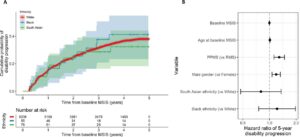Saige Power, et al. – University of Toronto.

Background: While the cholinergic system has long been a target for AD treatments, existing therapies targeting it only address symptoms rather than disease progression and have significant side effects.
This Study: Power and colleagues found that cholinergic signaling is upregulated in ex vivo slices of prefrontal cortex of two AD animal models, in terms of both the firing rate and response intensity of neurons receiving cholinergic input. These models differ both in species (TgCRND8 mice vs TgF344 rat) and mutations (TgCRND8 mice have amyloid precursor protein [APP] V717F, while TgF344 rats skip exon 9 of presenilin-1; both have APP KM670/671NL), suggesting that these changes are a more general feature of AD. Inhibitors of nicotinic signaling affected AD model mice more greatly than non-AD controls, whereas inhibitors of muscarinic signaling affected both equally, suggesting that nicotinic receptors mediate AD-specific cholinergic changes. Augmenting cholinergic signaling with an acetylcholinesterase inhibitor, the standard-of-care treatment galantamine, greatly increased the decay constant, leaving postsynaptic cells excited for an inappropriately long period. In contrast, a positive allosteric modulator for nicotinic receptors increased the peak excitation of postsynaptic neurons without affecting the decay constant.
Bottom Line: Changes to cholinergic signaling in AD may be mediated by nicotinic receptor signaling, with treatments increasing signaling through these receptors representing a potential refinement of existing cholinergic-targeting therapies.




